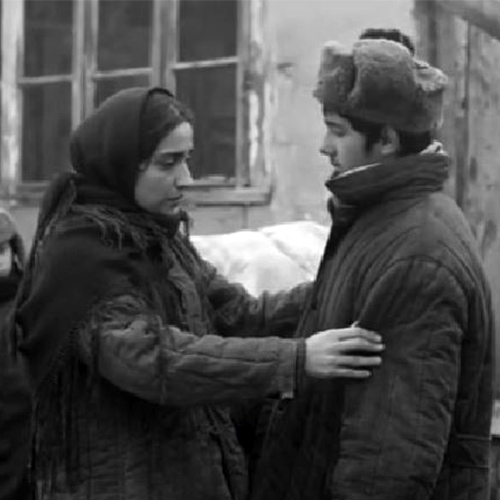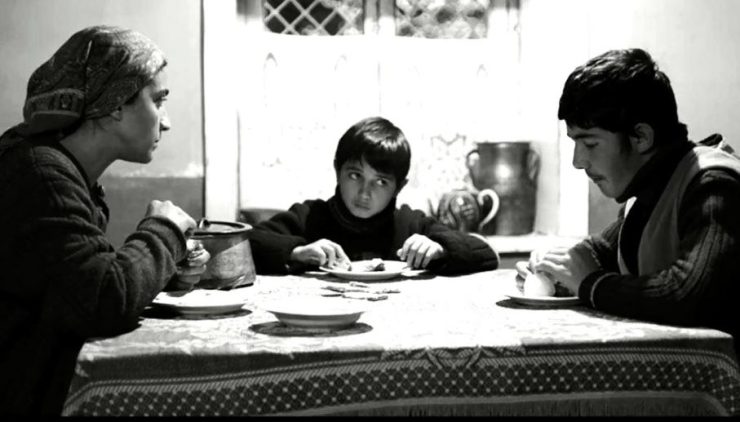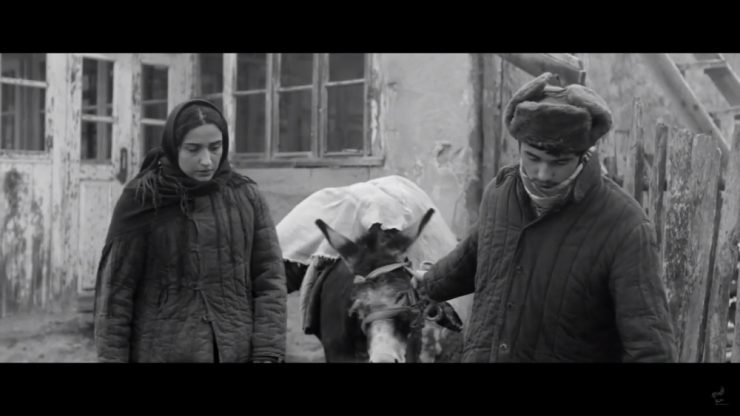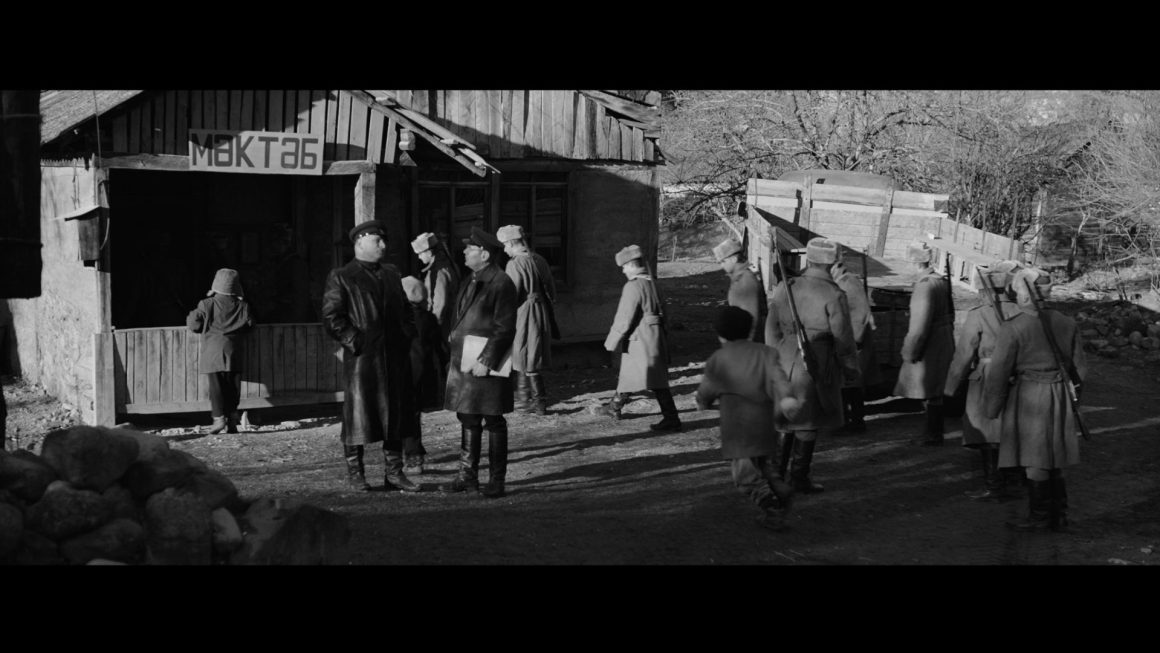A Film Without a Protagonist

The premiere of director Ilgar Najaf’s long-awaited film “Sughra and Her Sons” (original name – İlqar Nəcəf “Suqra və oğulları”) took place on January 19. There is probably no one without knowledge about the subject and plot of the film, so we would like to directly link to some points that caught my attention in the film.
The release of the film on January 20, the eve of the National Day of Mourning, felt incredibly poignant. It’s important to recognize that the horrors inflicted by the USSR upon the Azerbaijani people extended far beyond that fateful day in 1990. These oppressive actions began long before, even with the establishment of the Soviet government in Azerbaijan.
Drawing upon the poignant phrase uttered by one of the film’s heroes, Ahad (played by Samimi Farhad), “This war is not ours,” we can truly understand that this conflict had nothing to do with us. We were embroiled in our own internal struggles and battles. The film skillfully weaves a narrative set in a remote Azerbaijani village against the backdrop of these tumultuous events.

Every single image crafted in the film serves a purpose, carrying its own unique function. Even seemingly mundane objects, like a watermelon, play an intriguing role within the narrative. We’ll delve into this in more detail shortly. Sughra, played by Gunesh Mehdizadeh, is a woman who finds herself alone with her two sons, as her husband is away at the front. Interestingly, the film doesn’t provide much information about her husband beyond his deployment; he plays a rather conditional role in the narrative. Sughra emerges as a character who has seemingly “taken on the role of a man” due to the harshness of her life. Her face and hands bear the marks of this difficult existence, displaying a resolute and unyielding expression. In a departure from the conventional portrayal of such characters, where we often witness them tearing their hair, beating their knees, and crying, the author offers us an alternative depiction of a woman in Sughra. Her counterpart and antagonist in the story is the collective farm chairman, Barat, portrayed by Ilgar Jahangir. Barat’s main “foe” in the narrative is his being philanderer.

Barat, a character who shamelessly leers at every woman he encounters, ultimately becomes a victim of his own lust. It was quite surprising for the audience to witness Ilgar Jahangir, who typically portrays positive roles, in such a wholly negative image. The authors, in a break from conventional storytelling norms, chose to depict Barat as an entirely unsavory character. Expecting any semblance of goodness from him proves to be a futile endeavor.
Though the roles of Sughra’s sons may seem clear at first glance, the authors have given them unique and nuanced characteristics. The elder son, Musa, shoulders the responsibility of bringing firewood to the house and handling strenuous household tasks, effectively compensating for his father’s absence. On the other hand, the youngest son, Bakhtiyar, presents a more multifaceted persona. He represents the sole glimmer of “hope” for his mother, openly mocking his absent father and ever-eager for an “external battle.” However, Sughra fails to truly “see” all of this, maintaining a skeptical and at times even aggressive attitude towards her younger son. When he loses the donkey, the family’s only means of transportation, she nearly resorts to physical punishment… It wouldn’t be accurate to label her behavior as a lack of love; sometimes, people simply fail to perceive the evident “good” in front of them, and Sughra is no exception…

After Musa joins the ranks of the fugitives, Bakhtiyar’s role takes on even greater significance. Now, his responsibilities extend to bringing firewood to the house, sharing provisions with the neighbors, visiting the fugitives, and more. However, his encounters with the howling wolves during his nightly journeys past the fugitives’ dwellings frighten him to the point where he abandons the family’s donkey. The next morning, when Sughra and Bakhtiyar set out in search of the missing animal, they witness the hapless animal falling victim to the wolves’ attack. However, this gruesome scene isn’t explicitly shown on screen. The film employs several metaphorical cues, and this is one of them. The wolf attack serves as an ominous harbinger of future tragic events, and we bear witness to its fruition in the film’s conclusion.
The film also boasts a cast of minor yet remarkably vivid characters. The exceptionally talented actor Rasim Jafar, who takes on the role of the village teacher, shines as he always does. Jabish, (red. Film- Bizim Сəbiş müəllim – Our teacher Jabish, 1969) the teacher’s character, is brought back to life through Rasim Jafar’s performance, and he injects precision into every moment of every scene he appears in. This meticulous portrayal is likely a deliberate choice by the filmmakers. Teacher Jabish, like many others served during the Second World War. However, Ilgar Najaf’s “teacher” doesn’t distribute soap like Hasan Seyidbeyli’s counterpart. Instead, he focuses on instilling poetry in the children and teaching them the anthem of the Azerbaijan USSR, adhering closely to his role’s intended purpose. The character of the postman, portrayed by People’s Artist Gurban Ismayilov, manages to shine brightly among the performances of this professional actor. However, it’s regrettable that so little screen time was dedicated to this character. Ahad, played by Farhad Samimi, is another character who evokes a sense of “pity” among the audience. Viewers have already had the opportunity to witness the actor’s remarkable skills and talent in his role in the film “Pomegranate Orchard,” directed by Ilgar Najaf. Ahad’s dialogues in the film also hint at his aspirations for greatness. Unfortunately, his journey takes a tragic turn after he kills Barat.

The film “Sughra and Her Sons” exhibits a high level of craftsmanship in various aspects, including cinematography, handled by Ayhan Salar, music composed by Firudin Allahverdi, and editing carried out by Rza Asgarov. It’s worth noting that this isn’t the director’s first collaboration with the individuals I’ve mentioned. As we discussed earlier, the film contains several metaphorical moments that draw our attention. One intriguing aspect is how the characters with unpleasant intentions are resolved. Early in the film, the image of Barat delivering a letter to Musa at Sughra’s house is portrayed through a transparent frame on the door. This method is later repeated when People`s Commissariat for Internal Affairs –PCIA officers visit Sughra’s house.
Finally, during Sughra’s identification of the corpses, a portrait of Lenin is framed through the transparent door frame. This recurring technique effectively separates and frames the characters with negative intentions, and in the end, by showing a portrait of Lenin, it suggests that the troubles and difficulties are ultimately tied back to the founder of the Soviet power.
Another powerful metaphor in the film is the watermelon that young Bakhtiyar discovers and retrieves from the snowy desert during winter. A watermelon typically symbolizes the sweetness of summer, warm days, relaxation, and carefree moments. Bakhtiyar’s act of retrieving the watermelon and presenting it to his hungry mother at home serves as a poignant metaphorical gesture. Through this, the filmmakers convey the idea that a “sweet” future lies ahead, held within the hands of the younger generation. The catharsis within this scene unfolds as Sughra sheds tears while tasting the watermelon, realizing that the flame of hope hasn’t been extinguished. It’s a powerful reminder that there is always hope, even in the most challenging of circumstances.
It’s somewhat challenging to categorize any of the characters we’ve discussed in the film as having a primary or supporting role. In “Sughra and Her Sons,” each character carries their own weight and purpose. They’re all striving to achieve their goals while grappling with the prevailing circumstances. They aren’t in control of the situation; rather, the situation dictates their actions. In this film, time itself emerges as the true “protagonist.”
The film was shot in the Dashkasan district during winter, facing the daunting challenges of rugged terrain, adverse weather conditions, and a complex narrative. The film’s crew adeptly navigated these trials, and the international success of “Sughra and Her Sons” at premieres is a testament to its high-quality production.
Ilgar Guliyev
